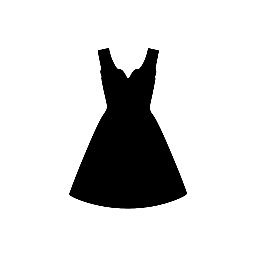The fashion industry is one of the world’s biggest polluters, responsible for 10% of global carbon emissions and 20% of wastewater. But as consumers demand change, sustainable and ethical fashion is no longer a niche trend—it’s a necessity.
This guide cuts through the greenwashing to explain what truly makes fashion sustainable, how to identify ethical brands, and practical steps to transform your wardrobe without sacrificing style.
1. Fast Fashion vs. Slow Fashion: Understanding the Difference
The Problem with Fast Fashion
- Environmental Impact: Polyester production emits 3x more CO₂ than cotton
- Human Cost: 93% of brands don’t pay garment workers a living wage (Fashion Checker, 2023)
- Waste Crisis: The average person throws away 81 lbs of clothing annually (EPA)
Slow Fashion Principles
✔ Quality Over Quantity – Fewer, better-made pieces
✔ Transparency – Brands sharing factory conditions and material sources
✔ Circularity – Designs made for recycling/upcycling
2. How to Spot Truly Sustainable Brands
Look for These Certifications
| Label | Meaning |
|---|---|
| GOTS | Organic textiles, ethical labor |
| Fair Trade Certified | Guaranteed fair wages |
| B Corp | Meets high social/environmental standards |
| OEKO-TEX® | No toxic chemicals in fabrics |
Red Flags of Greenwashing
- Vague terms like “eco-friendly” with no proof
- Sustainable “collections” while most products are unsustainable
- Lack of supply chain transparency
3. Building a Capsule Wardrobe: The 5-Step Method
Step 1: Audit Your Closet
- Keep: Well-made, frequently worn items
- Donate/Sell: Unworn pieces in good condition
- Recycle: Damaged natural fabrics (cotton, wool)
Step 2: The 30-Wear Rule
Before buying, ask: “Will I wear this at least 30 times?”
Step 3: Invest in These Staples
- White organic cotton shirt
- Well-tailored blazer (vegan wool or recycled materials)
- Dark wash ethical jeans
- Little black dress (from deadstock fabric)
Step 4: Care for Longevity
- Wash less, use cold water
- Air dry instead of machine drying
- Learn basic repairs (sewing buttons, darning socks)
Step 5: Secondhand First
- Thrifting (local shops, Depop, ThredUp)
- Renting (for special occasions)
4. Sustainable Materials Decoded
Best Choices
- Organic Cotton – Uses 91% less water than conventional
- Tencel/Lyocell – Biodegradable, made from sustainably sourced wood
- Recycled Polyester – Diverts plastic from oceans
Materials to Avoid
- Virgin Polyester – Sheds microplastics, fossil-fuel derived
- Conventional Leather – High methane emissions from livestock
- Viscose (unless certified) – Often linked to deforestation
5. Ethical Shopping on a Budget
Affordable Sustainable Brands
- Pact (Organic basics)
- Kotn (Ethically sourced Egyptian cotton)
- ABLE (Living wage guarantee)
Cost-Per-Wear Formula
A $200 coat worn 100 times = $2 per wear
A $20 top worn twice = $10 per wear
6. The Future of Fashion: Innovations to Watch
- Mycelium Leather – Mushroom-based alternative to animal leather
- Algae Dyes – Non-toxic, carbon-negative coloring
- 3D Knitting – Zero-waste garment production
7. Take Action Beyond Your Wardrobe
- Support policy changes (Fashion Act in NY, EU’s textile regulations)
- Host clothing swaps with friends
- Call out greenwashing on social media
Conclusion
Sustainable fashion isn’t about perfection—it’s about progress. Every conscious purchase, every repaired garment, and every demand for transparency pushes the industry toward real change.
Your wardrobe is a vote. Make it count.


0 responses to “The Truth About Sustainable & Ethical Fashion: How to Build a Conscious Wardrobe”